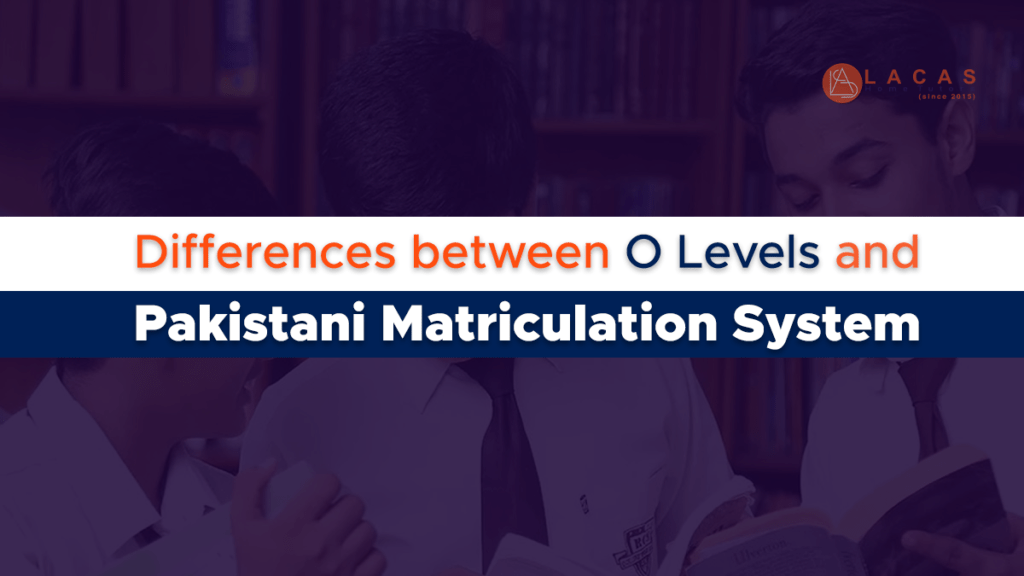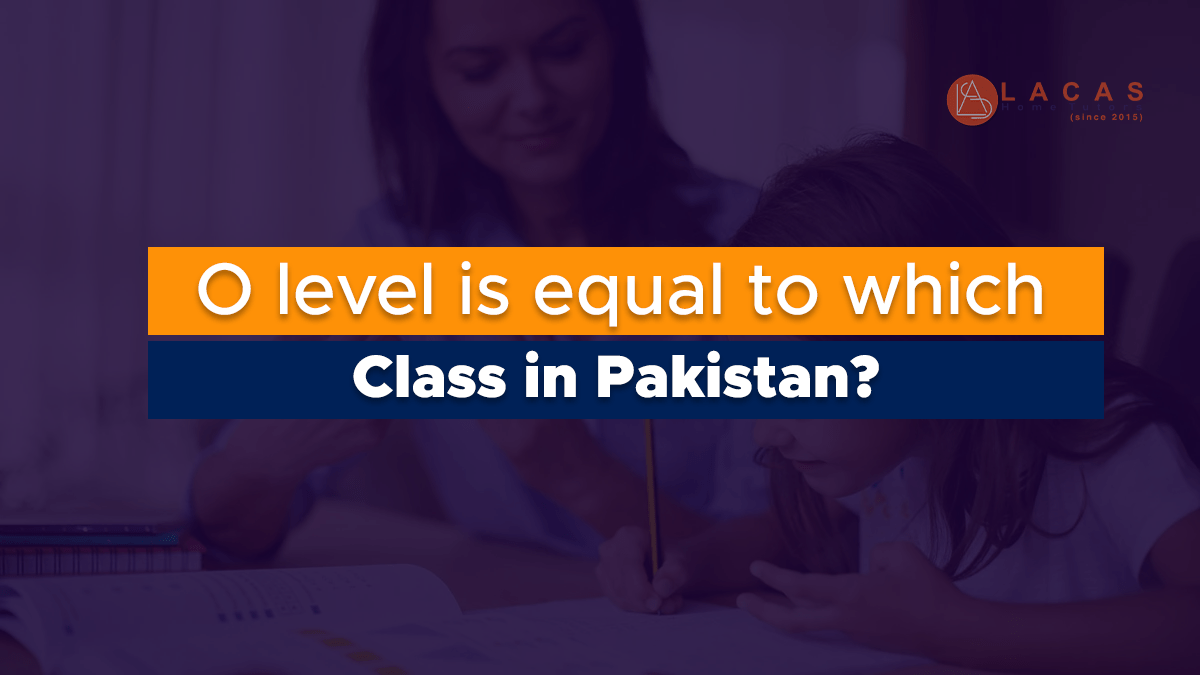In the dynamic educational landscape of Pakistan, the term “O Level” often raises questions about its equivalence to the local grading system. O Level, or Ordinary Level, is an internationally recognized qualification offered by Cambridge International Examinations (CIE). It is typically taken by students in their 14th and 15th years of age, corresponding to grades 9 and 10 in the Pakistani education system. In Pakistan, O Level is considered equivalent to the Secondary School Certificate (SSC), commonly known as Matriculation. SSC is a qualification awarded upon successful completion of grade 10, marking the transition from secondary to higher secondary education.
Understanding the O Level System
O Level Education is a system of education that was originally developed in the United Kingdom but has gained popularity worldwide, including in Pakistan. O Level stands for “Ordinary Level,” and it refers to the standard of education and the level of difficulty of the examinations. The O Level system is known for its rigorous curriculum and high academic standards.
In the O Level system, students are required to study a range of subjects, including English, Mathematics, Science, and Humanities. These subjects are taught in a structured and comprehensive manner, ensuring that students have a strong foundation in each subject area.
One of the key features of the O Level system is its internationally recognized qualifications. O Level qualifications are widely accepted by universities and educational institutions around the world, making it an attractive option for students who wish to pursue higher education abroad.
In Pakistan, the O Level system is typically considered equivalent to the 10th grade of the Pakistani educational system. However, it is important to note that the content and structure of the O Level examinations are different from the Pakistani Matriculation examinations.
Overall, understanding the O Level system is essential for students and parents who are considering this educational pathway. It offers a challenging curriculum, internationally recognized qualifications, and a pathway to higher education opportunities.
Educational Systems in Pakistan
Pakistan has a diverse educational system that caters to different levels of education. The system is divided into various stages, including primary, middle, secondary, and higher education.
At the primary level, students typically study from grade 1 to grade 5, while at the middle level, they study from grade 6 to grade 8. The secondary level includes two main systems: the O level system and the matriculation system.
The Matriculation system, also known as the SSC (Secondary School Certificate), is a national system that is followed by a majority of students in Pakistan. It consists of a two-year program, where students study various subjects and take examinations at the end of each academic year. Successful completion of the Matriculation examinations leads to the award of the Secondary School Certificate.
On the other hand, the O Level system is an internationally recognized system that is commonly followed by students who aim to pursue higher education abroad. In Pakistan, the O Level system is typically considered equivalent to the 10th grade of the Matriculation system. However, it is important to note that the content and structure of the O Level examinations are different from the Matriculation examinations.
Overall, the educational systems in Pakistan provide students with different options for pursuing their academic goals. Students and parents need to understand the differences between these systems to make informed decisions about their education.
Mapping O Levels to the Pakistani Education System
The question of mapping O Levels to the Pakistani education system is one that often arises among students and parents. It is important to understand the equivalency and recognition of O Levels in Pakistan to make informed decisions about education. In Pakistan, O Levels are generally considered equivalent to the 10th grade of the Matriculation system. However, it is essential to note that the content and structure of the O Level examinations differ from those of the Matriculation examinations.
The O Level system offers a challenging curriculum with internationally recognized qualifications, making it a popular choice for students who wish to pursue higher education abroad. While the Matriculation system is followed by a majority of students in Pakistan, the O Level system provides an alternative pathway to explore different educational opportunities.
Mapping O Levels into the Pakistani education system allows students and parents to understand the academic progression and plan accordingly. It is important to consult with educational institutions and experts to ensure proper recognition and acceptance of O Level qualifications. By understanding the mapping process, students can make informed decisions about their education and choose the educational pathway that best aligns with their goals and aspirations.
Structure of O Level Examinations
The structure of O Level examinations plays a crucial role in determining the success of students in this educational system. Examinations for O levels usually consist of two parts: coursework and final examinations.
The coursework component involves assignments, projects, practical work, and other assessments that are completed throughout the duration of the course. This component allows students to demonstrate their understanding of the subject matter and their ability to apply their knowledge to real-world situations.
The final examinations, on the other hand, are typically held at the end of the course and cover the entire syllabus. These examinations are usually conducted by external examination boards and are standardized to ensure fairness and consistency in grading. The examinations may be written, practical, or a combination of both, depending on the subject.
One of the unique aspects of O Level examinations is the grading system. Instead of receiving traditional letter grades, students are awarded a numerical grade ranging from 1 to 9, with 9 being the highest. This system allows for a more detailed and accurate assessment of students’ performance.
Overall, the structure of O Level examinations ensures that students are thoroughly tested on their knowledge and skills in each subject. It provides a comprehensive evaluation of their abilities and prepares them for further academic pursuits. Students who successfully complete O Level examinations are awarded qualifications that are recognized and accepted by universities and educational institutions worldwide, opening doors to a wide range of higher education opportunities.
O Level Subjects and Curriculum
The O Level system offers a diverse range of subjects and a comprehensive curriculum to ensure students receive a well-rounded education. The subjects offered in O Levels cover a wide range of disciplines, allowing students to explore their interests and strengths.
Some of the core subjects in the O Level curriculum include English Language, Mathematics, Sciences (such as Physics, Chemistry, and Biology), and Humanities (such as History, Geography, and Economics). These subjects provide a solid foundation in key areas of knowledge and develop critical thinking, problem-solving, and analytical skills.
In addition to the core subjects, O Level students also have the option to choose from a variety of elective subjects. These subjects include Business Studies, Computer Science, Art and Design, Literature in English, and many more. These elective subjects allow students to tailor their education to their individual interests and future career aspirations.
The curriculum in O Levels emphasizes the practical application of knowledge and encourages independent thinking and research. Students are encouraged to think critically, express their ideas clearly, and analyze complex information. The curriculum is designed to prepare students for higher education and beyond, equipping them with the necessary skills and knowledge to succeed in their chosen field.
Overall, the O Level subjects and curriculum provide a well-rounded and comprehensive education that prepares students for future academic and professional pursuits. It offers a balance of core subjects and elective options, allowing students to explore their passions and interests while developing essential skills for success.
Differences between O Levels and Pakistani Matriculation System

The O Level system and the Pakistani Matriculation system have some notable differences. These differences can help students and parents make informed decisions about which educational pathway is right for them.
One major difference between the two systems is the curriculum. O Levels have a more comprehensive and challenging curriculum compared to the Matriculation system. O Level students study a wide range of subjects, including English, Mathematics, Science, and Humanities, whereas Matriculation students typically have a more limited subject selection.
Another difference is the structure of the examinations. O Level examinations are divided into coursework and final examinations, while Matriculation examinations are based solely on final exams. The coursework component in O Levels allows students to demonstrate their understanding and skills throughout the duration of the course, whereas Matriculation students rely solely on their performance in the final exams.
Grading systems also differ between the two systems. O Levels use a numerical grading system, ranging from 1 to 9, which provides a more detailed assessment of a student’s performance. In contrast, the Matriculation system uses a letter grade system.
Additionally, O Level qualifications are internationally recognized and accepted by universities and educational institutions worldwide. This recognition offers O Level students a wider range of higher education opportunities, including studying abroad. Matriculation qualifications, on the other hand, may have more limited recognition and acceptance outside of Pakistan.
Understanding these differences between the O Level and Matriculation systems is crucial for students and parents to make informed decisions about their education. Both systems have their own strengths and advantages, and it is important to consider individual goals and aspirations when choosing between them.
Also Read: A Level is equal to which Class in Pakistan?
Recognizing O Level Qualifications in Pakistan
Recognizing O Level qualifications in Pakistan is an important aspect for students and parents to consider when choosing this educational pathway. O Level qualifications are widely recognized and accepted by universities and educational institutions around the world, including in Pakistan. This recognition opens up a world of opportunities for students who wish to pursue higher education abroad or in Pakistan.
Many universities in Pakistan, both public and private, accept O Level qualifications for admission into undergraduate programs. However, it is important to note that each university may have specific admission criteria and requirements. Some universities may require a certain number of O Level subjects or specific grades in certain subjects.
It is advisable for students to thoroughly research the admission criteria of their desired universities and consult with educational institutions or advisors to ensure that their O Level qualifications are recognized and accepted. Additionally, students should gather all necessary documentation, such as transcripts and certificates, to provide evidence of their O Level qualifications during the application process.
By recognizing and accepting O Level qualifications, educational institutions in Pakistan are acknowledging the high academic standards and rigorous curriculum of the O Level system. This recognition validates the hard work and dedication of O Level students and provides them with equal opportunities to pursue higher education in their own country.
Admission Criteria for Pakistani Educational Institutions
When it comes to admission criteria for Pakistani educational institutions, students with O Level qualifications need to be aware of the specific requirements set by each university or college. While many universities in Pakistan accept O Level qualifications for admission into undergraduate programs, there may be variations in the number of O Level subjects or specific grades in certain subjects that are required. Therefore, it is crucial for students to thoroughly research the admission criteria of their desired institutions and seek guidance from educational institutions or advisors.
To ensure that their O Level qualifications are recognized and accepted, students should gather all necessary documentation, including transcripts and certificates, to provide evidence of their O Level qualifications during the application process. It is also recommended to engage in open communication with the admissions departments of the institutions they are applying to, to seek clarity on any specific requirements or questions they may have.
By understanding the admission criteria and following the necessary steps, students with O Level qualifications can increase their chances of securing a place in their desired educational institutions in Pakistan. The recognition of O Level qualifications by Pakistani educational institutions signifies the value and quality of the O Level system, providing equal opportunities for O Level students to pursue higher education in their own country.
Transitioning from O Levels to Intermediate or A Levels
Transitioning from O Levels to Intermediate or A Levels is a significant step in the educational journey of students in Pakistan. After completing O Level Education, students have the option to continue their studies in either the Intermediate or A Level system, depending on their goals and aspirations.
The Intermediate system, also known as the HSSC (Higher Secondary School Certificate), is a two-year program that is typically followed by students in Pakistan. This system offers a more specialized and focused curriculum compared to O Levels. Students have the option to choose a specific stream, such as Pre-Medical, Pre-Engineering, Commerce, or Humanities, based on their interests and career goals.
On the other hand, the A Level system is an internationally recognized system that is widely followed by students who aspire to study abroad. A Levels provide a more in-depth and rigorous curriculum compared to the Intermediate system. The system offers a wide range of subjects, allowing students to explore their academic interests and specialize in specific areas.
Transitioning from O Levels to Intermediate or A Levels requires careful consideration of individual goals, interests, and future aspirations. Students should evaluate their strengths and interests in different subjects and streams to make an informed decision. It is also advisable to consult with educational institutions, teachers, and career advisors who can provide guidance and support in choosing the appropriate educational pathway.
Overall, transitioning from O Levels to Intermediate or A Levels provides students with the opportunity to further specialize and excel in their chosen subjects. It prepares them for higher education and future career prospects by equipping them with the necessary skills, knowledge, and academic foundation. Students should embrace this transition as an exciting phase in their educational journey and approach it with enthusiasm and dedication.
Conclusion: Embracing the Benefits of O Level Education in Pakistan
In conclusion, O Level Education in Pakistan offers numerous benefits and opportunities for students who choose this educational pathway. With its rigorous curriculum, internationally recognized qualifications, and diverse range of subjects, O Level provides students with a well-rounded education and prepares them for future academic pursuits.
One of the key advantages of O Level Education is its international recognition. O Level qualifications are widely accepted by universities and educational institutions worldwide, allowing students to explore higher education opportunities both in Pakistan and abroad. This recognition validates the hard work and dedication of O Level students and provides them with equal opportunities to pursue their academic goals.
Additionally, the O Level system emphasizes critical thinking, problem-solving, and independent research, equipping students with the necessary skills to excel in their chosen field. The comprehensive curriculum and balanced subject selection enable students to explore their interests and strengths, fostering a love for learning and personal growth.
Moreover, O Level Education provides a smooth transition to higher education pathways such as Intermediate or A Levels, allowing students to specialize in their chosen subjects and further enhance their academic foundation.
Overall, embracing the benefits of O Level Education in Pakistan opens doors to a world of opportunities and equips students with the skills and knowledge needed to thrive in today’s competitive world. By choosing this educational pathway, students can confidently pursue their academic aspirations and embark on a successful future.
Also,











